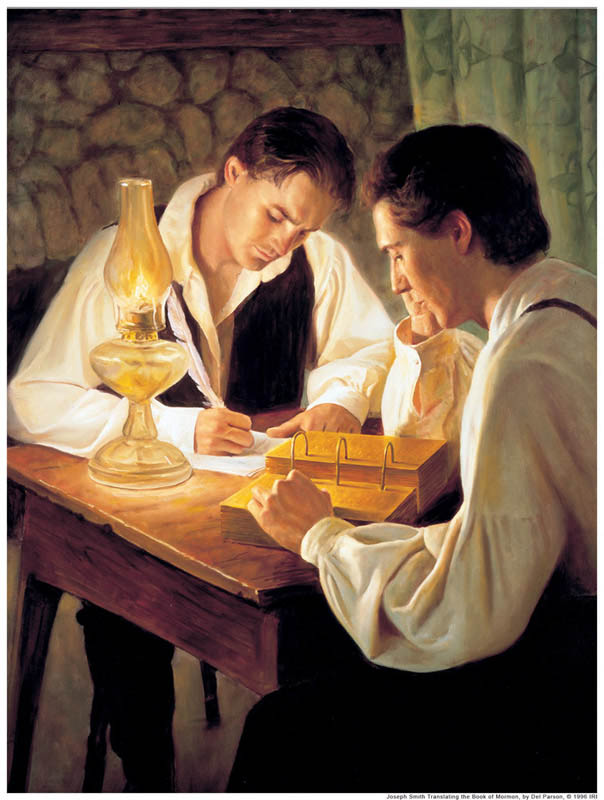Royal Skousen, a professor of linguistics at Brigham Young University, has published the results of a twenty-five year study on original and printer’s manuscript text of the Book of Mormon.
Joseph Smith was the first prophet of The Church of Jesus Christ of Latter-day Saints. The members of this church, sometimes referred to as Mormons, consider the Book of Mormon to be a companion book to the Bible and a second witness of Jesus Christ. It was translated from plates written anciently and hidden away by a man named Moroni until Moroni, now an angel, led Joseph to the plates and tutored him in preparation for the restoration of the gospel. The plates were written in reformed Egyptian and the methods in which they were translated have been a popular topic of discussion. There has also been discussion about the errors in the book, which some mistakenly believe invalidate the record. Skousen’s research helps readers to better understand how the book came into being in modern times.
 Mormons do not have the original plates on which the book was written, just as we no longer have the original scrolls on which the Bible were written. While the Biblical scrolls were lost or destroyed, the Book of Mormon plates were taken back into protective care by Moroni. The lack of both original records—those of the Bible and of the Book of Mormon—force us to act on faith and also challenge us to know what is true in comparison to the original records.
Mormons do not have the original plates on which the book was written, just as we no longer have the original scrolls on which the Bible were written. While the Biblical scrolls were lost or destroyed, the Book of Mormon plates were taken back into protective care by Moroni. The lack of both original records—those of the Bible and of the Book of Mormon—force us to act on faith and also challenge us to know what is true in comparison to the original records.
The original manuscript was written largely by scribes, who put into writing what Joseph Smith saw and translated to them verbally. Joseph had minimal education, as did many in the`1830s. Long after his wife had remarried and moved on to an apostate group, she said he did not have the skills to create the Book of Mormon or even to write the translation he carried out. The translation was made possible through the help of the Holy Ghost.
One challenge facing researchers is that most of the original transcription is gone. 116 pages were lost when his scribe took them to show his wife and they were stolen. However, this was actually prophesied in the Book of Mormon and had been prepared for. God had assigned the son of the first writer to record some of the same information in his own record, although he admitted that he didn’t know why he needed to do that.
The first draft of the manuscript was placed in the cornerstone of the Nauvoo House in 1841. Unfortunately, when it was retrieved in 1882, most of it was ruined by water and mold. Only 28 percent is still extant and most of it is now owned by the Church.
A printer’s manuscript had been prepared based on the original and the Church of Christ owns all of that manuscript. They are a group that broke away from the main church after Joseph Smith died. The printer used the printer’s manuscript for all but the sections found in Helaman 13 through the end of Mormon. The remaining section is based on the original transcription copy.
Anytime manuscripts are written by a scribe or copied by hand, there are errors. This is why various Biblical manuscripts that have been uncovered are not identical. Skousen found that the scribes changed on average one or two things per page. These were textual changes affecting spelling of names or alteration of wording. Then the printer made additional errors in the typesetting, although he also made a sincere effort to correct them as he went. It was simply a difficult task that lent itself to errors.
In 1837, Joseph Smith himself did some editing for the next edition, in order to put it into more standard English. He edited again in 1840 and this time he restored some phrases that had been missed in the copying process.
The errors that have crept into the manuscript are simply the usual problems of any book—typos, miscopied words, missing words. They do not affect the teachings of the book. The newest edition of the book clears up some of these problems. The truthfulness of God’s word is not based on the number of typos, but on the message contained within His books.
Read more about the project to study the Book of Mormon translation.
